Tags
and Modernity, Caillebotte, fashion, French Fashion mid-1800s, Impressionism, Le déjeuner sur l'herbe, Manet, Metropolitan Museum of Art, Monet
This is the current exhibit at the Metropolitan Museum of Art in New York City. Whether you’re a fan of French, fashion, Impressionism, or, if you are like moi, a fan of all of the above, this exhibit will set your French-loving, francophile heart a-flutter! C’est la créme de la créme. Don’t miss it! Hurry! It ends May 27, 2013.
There are more than 80 paintings featuring period clothing and accessories from the mid 1800s, “when Paris emerged as the style capital of the world.”
“The latest fashion . . . is absolutely necessary for a painting. It’s what matters most.”
—Édouard Manet
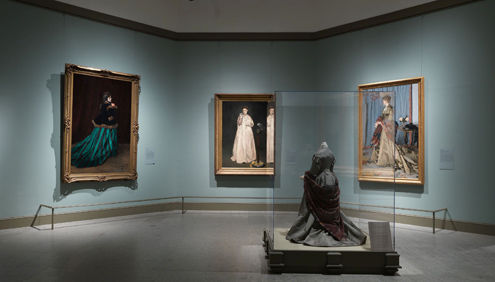
Gallery One – Refashioning Figure Painting

Claude Monet; Camille, 1866
Refashioning Figure Painting – In the 1860s, clothing styles were changing to reflect Napoleon’s recent modernization of Paris, which I wrote about here. The focus was on style and elegance. These paintings truly were “all about the dress.”

Gallery Two – En Plein Air
En Plein Air – Artists began painting contemporary, outdoor, leisure scenes.
Note the size of Monet’s Luncheon on the Grass (Le Déjeuner sur L’Herbe). It is about 13 feet tall and 20 feet wide. According to the Met, this is the first time that both pieces have been shown together in the US. And why is it in pieces?

Claude Monet; Luncheon on the Grass, 1865–66
The Musée d’Orsay reports that, in 1920, the painter himself recounted what had happened to the picture: “I had to pay my rent, I gave it to the landlord as security and he rolled it up and put in the cellar. When I finally had enough money to get it back, as you can see, it had gone mouldy.” Monet got the painting back in 1884, cut it up, and kept only three of the pieces. The third has since disappeared.
It does make me curious. Is the couple sitting on the blanket looking at what is now missing? If so, what was it? I hope the third piece reappears some day…
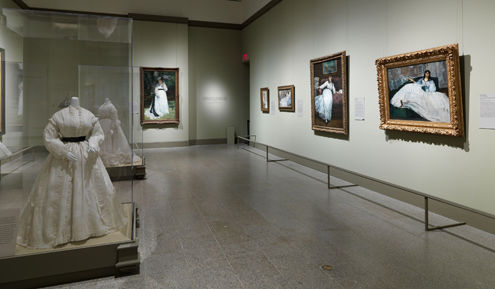
Gallery Three – The White Dress

Auguste Renoir; Lise – Woman with Umbrella, Femme a l’ombrelle, 1867
- Gallery Four – The Black Dress

Édouard Manet; The Parisienne, ca. 1875

Gallery Five – The Dictates of Style
The Dictates of Style – Later in the century, the focus shifted from the details of the fabric to the effect of sunlight on the fabric. Although the main focus may be on the sunlight, look at all of the details on this dress which can also be seen in the painting. Imagine sewing (or painting) those pleats! Oh là là!

Summer Day Dress Worn by Madame Bartholomé
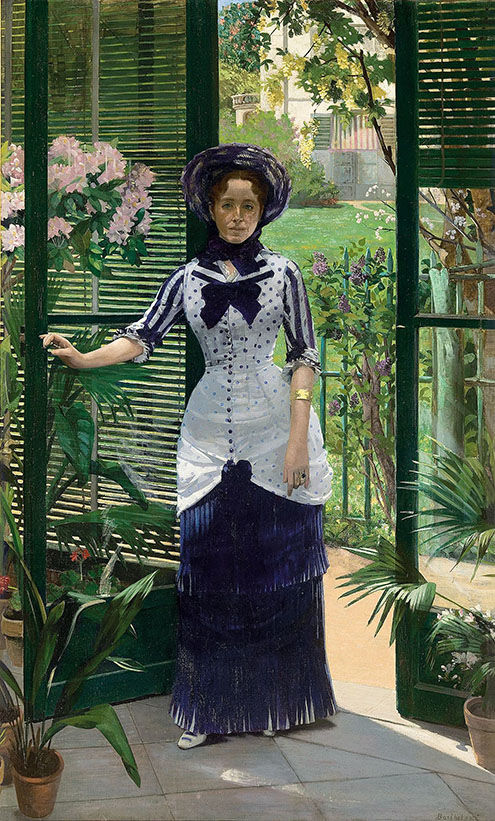
Albert Bartholomé; In the Conservatory (Madame Bartholomé), ca. 1881
Notice the way the sunlight has washed the dots from the front of her right hip and the reflection of that part of her dress in the conservatory door glass.
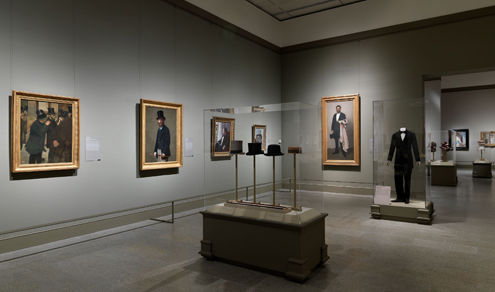
Gallery Six – Frocks, Coats, and Fashion: The Urban Male
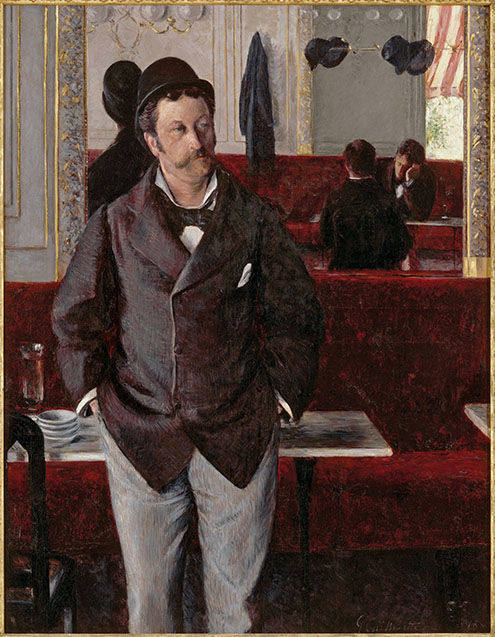
Gustave Caillebotte; At the Café, 1880
The Urban Male – The men’s fashion is a bit boring. There are a variety of hats, coats, and canes. I like the artist’s use of the mirror in this painting. And note on the hooks above the men’s heads – more hats!
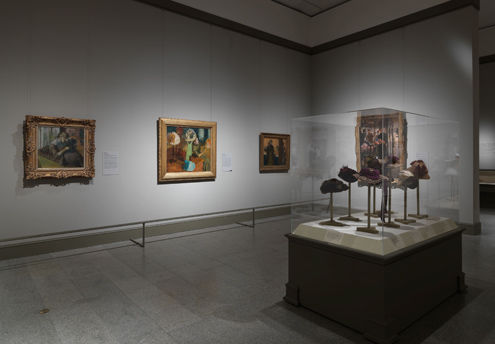
Gallery Seven – Consumer Culture
Consumer Culture – In the 1880s, several artists painted pictures depicting the relationships between customers, the store merchandise that they coveted, and the sales girls. They also began to focus on particular items of clothing, such as hats, shoes, and undergarments, rather than the full silhouette.

Edgar Degas (French, 1834–1917) The Millinery Shop, La Boutique de la Modiste, ca. 1882–86

James Tissot; The Shop Girl, La Demoiselle de Magasin, 1883–85
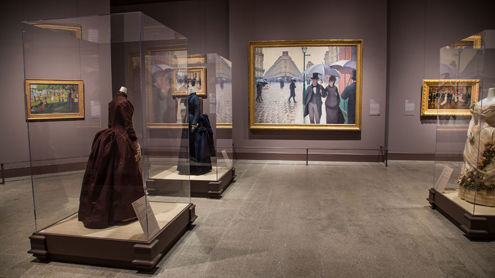
Gallery Eight – Spaces of Modern Life

Gustave Caillebotte; Paris Street; Rainy Day, Rue de Paris; temps de pluie 1877
Spaces of Modern Life – Note the newly widened streets of Paris, the beginning of a more modern life, and the end of the Impressionist era.
According to the Met website, the last Impressionist exhibition took place in Paris in 1886. “The next generation of artists—the Post-Impressionists—would champion evocation over description, imagination over observation, and timeless sentiment over the fleeting whims of fashion.”
Girl with a Boat – Picasso
Now, I realize that Picasso was a Modernist who came after the Post-Impressionists, but regardless, I will take an Impressionist over a Modernist any day. That’s the way I like things – like the Impressionists – light and airy, full of fashion, fresh air, soft colors, flowers, and sunshine.
~FTW
(Unless otherwise noted, information and photos in this post are courtesy of the Metropolitan Museum of Art.)

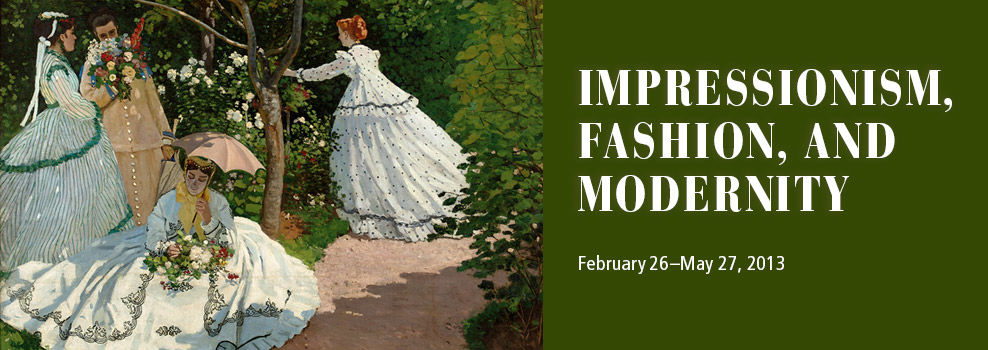
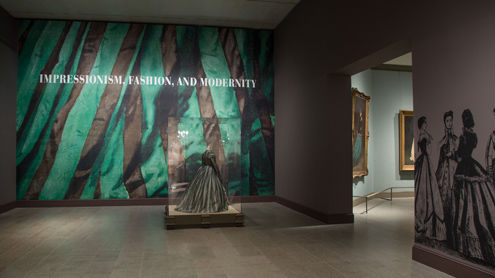


Ooo-la-la! I’ve seen a few of the exhibit items at our museum in San Francisco but I’d love to meet you in New York for this one!
I love New York, but I think I would love San Francisco even more because of the warmer climate! If you’re coming east, let me know. ~FTW
What a fantastic exhibition, I would love to see this … but gone before I get there in Sept. Lucky you .. and your photos are stunning. Now I’m envy. Thank you so much for sharing it with me.
MERCI for doing this because it will be in Chicago starting June 26th…I am as good as there. Last summer when I visited the Art Institute they had a note on the wall that Rainy Day was out on loan for this exhibit. I have been waiting patiently for its return. AND that Monet’s Luncheon is simply breath-taking. Can’t wait to see it in person.
Enjoy your visit to Chicago. Hope all is well in the land of vintage french chic!
Hi. It was very good.
l am Iranian.
I do not speak English very good.
thank you.